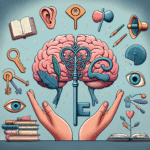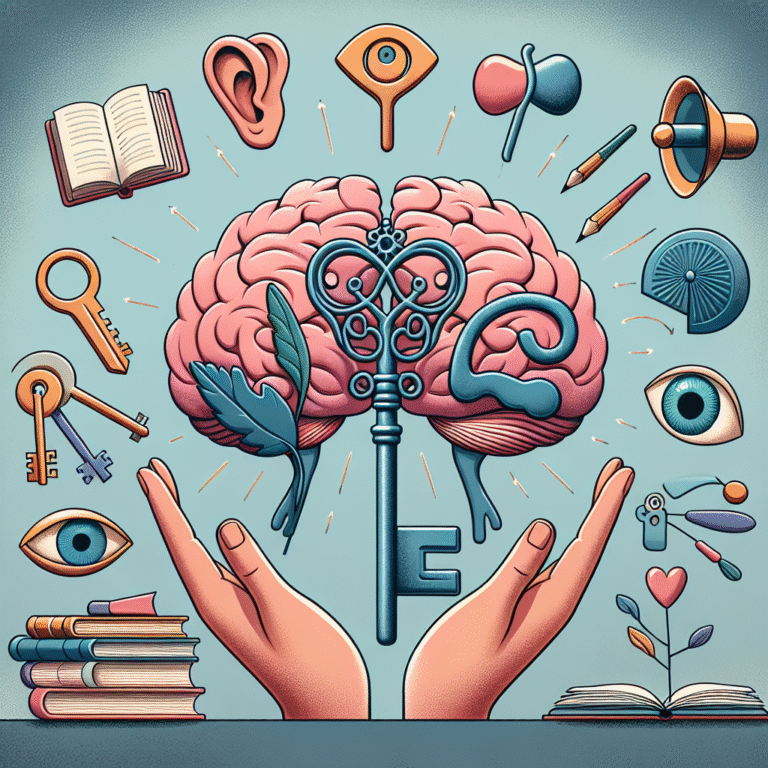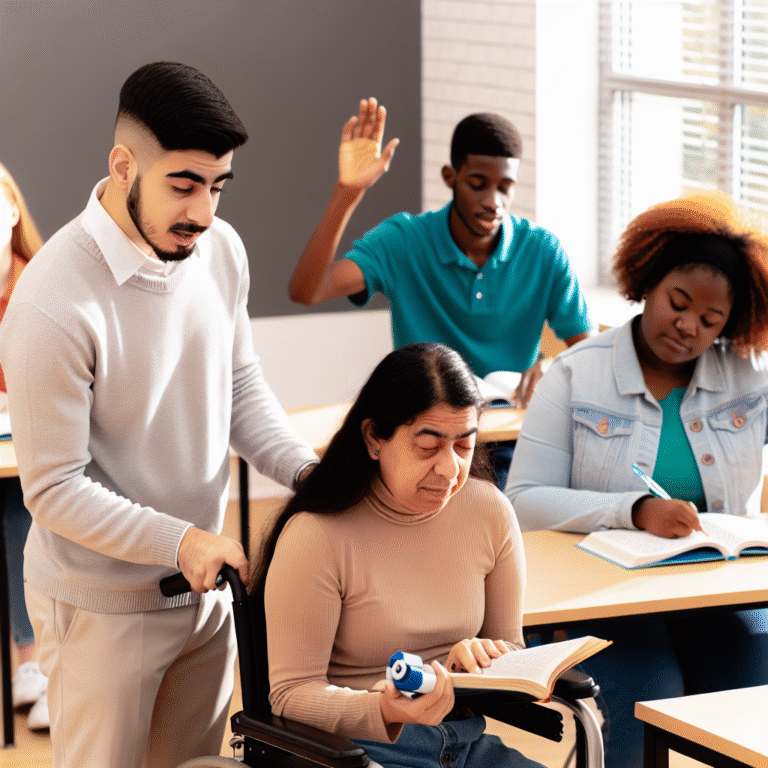Bridging the Gap: The Role of Assistive Technology in Supporting Learning Disabilities
Learning disabilities can often create significant barriers for students, affecting their ability to learn and absorb information in traditional educational settings. Bridging the gap between their challenges and the skills they need to thrive is where assistive technology steps in as an essential ally. This article delves into the transformative role of assistive technology in supporting learning disabilities, examining its significance, practical applications, and future potential.
Introduction
Imagine walking into a classroom where every student is fully engaged, learning at their own pace, and embracing their unique strengths. For students with learning disabilities, this vision has often felt like a distant dream, overshadowed by misunderstandings and systemic barriers. However, advancements in technology are turning that dream into reality. Assistive technology is redefining the educational experience, empowering learners to overcome obstacles and excel. This article explores how bridging the gap: the role of assistive technology in supporting learning disabilities can facilitate not just learning, but also confidence and independence.
Understanding Learning Disabilities
Before we dive into the specifics of assistive technology, it’s crucial to understand what learning disabilities entail. Learning disabilities are neurological conditions that affect how individuals process and comprehend information. This can manifest in various forms, including:
- Dyslexia: Challenges in reading.
- Dysgraphia: Difficulties with writing.
- Dyscalculia: Struggles in understanding and working with numbers.
- Attention Deficit Hyperactivity Disorder (ADHD): Impacts focus and attention.
Recognizing that each student is unique is essential. Learning disabilities do not correlate with intelligence; rather, they affect the way individuals learn. Here, assistive technology proves to be a game-changer.
The Landscape of Assistive Technology
Assistive technology encompasses a wide range of tools designed to enhance learning for students with disabilities. Their primary goal is to provide support that caters to individual learning needs, thereby fostering an inclusive educational environment. Common forms of assistive technology include:
- Text-to-Speech Software: Converts written text into spoken words, aiding students with dyslexia.
- Speech-to-Text Software: Allows users to dictate their thoughts verbally, reducing writing barriers.
- Digital Math Tools: Simplify complex calculations, making math more accessible.
- Organizational Apps: Help students manage time, tasks, and materials effectively.
Each of these tools plays a vital role in bridging the gap: the role of assistive technology in supporting learning disabilities, promoting autonomy and self-advocacy in learners.
Case Study 1: Text-to-Speech Software in Action
Consider the case of Sarah, a bright student with dyslexia who struggles significantly with reading comprehension. With the introduction of text-to-speech software, Sarah’s academic performance transformed. The software read assignments aloud, enabling her to understand and engage with the material effectively.
- Analysis: Sarah’s case illustrates how bridging the gap: the role of assistive technology in supporting learning disabilities can empower students to access and process information that might have otherwise been elusive.
The Impact of Assistive Technology on Learning Outcomes
The adoption of assistive technology can lead to remarkable improvements in learning outcomes. According to various studies, students using assistive tools often demonstrate:
- Improved academic performance.
- Increased attendance rates.
- Enhanced engagement in classroom activities.
The Digital Divide and Accessibility
While assistive technology holds immense potential, disparities in access remain a critical issue. Factors such as socioeconomic status, geographic location, and school funding can create a digital divide, impacting the availability of these tools. Thus, it’s essential to advocate for equitable access to assistive technologies to ensure that all learners, regardless of their background, can benefit.
Case Study 2: School-Wide Implementation of Assistive Technology
In a progressive school district in California, administrators recognized the importance of technological integration. They launched a program to provide assistive technology devices and training to teachers and students. Within one academic year, they observed:
- A 30% increase in standardized test scores among students with learning disabilities.
Heightened levels of student confidence and participation in class discussions.
- Analysis: This initiative emphasizes the crucial role that systematic support and training play in enhancing the efficacy of assistive technologies, reinforcing the idea that bridging the gap requires a collaborative approach.
The Role of Educators and Families
Educators play a pivotal role in the successful implementation of assistive technologies. Professional development and training are essential to equip teachers with the knowledge and skills necessary to integrate these tools effectively. Furthermore, involving families in the conversation is crucial. When parents are educated about available resources, they can advocate for their children and support the integration of technology at home.
Overcoming Resistance to Assistive Technology
Despite the clear benefits that assistive technology offers, resistance may arise due to misconceptions or a lack of understanding. Some educators may doubt the effectiveness of these tools or feel unprepared to implement them in their classrooms. Here’s how to combat these barriers:
- Professional Development: Implement ongoing training programs to build confidence in using assistive technologies.
- Success Stories: Share case studies and testimonials highlighting the positive impacts of assistive tools.
- Collaborative Efforts: Foster partnerships between schools, technology providers, and families to promote accessibility and understanding.
Case Study 3: Professional Development Leading to Acceptance
At a middle school in Texas, a comprehensive professional development program focused on assistive technology transformed the faculty’s approach. Initially skeptical, teachers became advocates after witnessing dramatic shifts in student engagement and performance. The school recorded a 25% increase in the use of assistive tools within three months.
- Analysis: This highlights the significance of bridging the gap: the role of assistive technology in supporting learning disabilities lies not just in the tools themselves, but in the mindset and preparedness of those who adopt them.
The Future of Assistive Technology
As technology evolves, so too do the possibilities for assistive learning tools. Innovations such as artificial intelligence, machine learning, and virtual reality are set to revolutionize the landscape of education for students with learning disabilities.
Emerging Technologies
- AI-Powered Customization: Future assistive technologies will likely harness AI to adapt to individual learning styles and preferences in real time.
- Interactive Learning Environments: Virtual and augmented reality applications can create immersive experiences that cater to diverse learners.
- Universal Design in Learning: This approach advocates for designing curricula that accommodate all learners, including those with disabilities, from the outset.
Conclusion
In conclusion, bridging the gap: the role of assistive technology in supporting learning disabilities represents not just a shift in methodology, but a movement towards a more inclusive and equitable education system. The integration of assistive technologies can empower students to overcome barriers, celebrate their uniqueness, and thrive academically and socially.
The journey towards full inclusion requires commitment and collaboration among educators, families, and advocates. By leveraging the potential of assistive technology, we can ensure that every learner, regardless of their challenges, has the opportunity to succeed.
Actionable Insights
- Empowerment Through Advocacy: Encourage parents and students to be vocal about their needs for assistive technologies.
- Invest in Training: Schools should prioritize professional development for educators.
- Foster Collaboration: Create partnerships between various stakeholders to promote access to resources.
FAQs Section
1. What is assistive technology?
Assistive technology refers to any device or application used to enhance learning and assist individuals with disabilities. It ranges from simple tools like pencil grips to advanced software that aids in reading and writing.
2. How can schools implement assistive technology effectively?
Schools can effectively implement assistive technology by investing in professional development, fostering a culture of inclusion, and involving families in the decision-making process.
3. What are some common types of assistive technology for learning disabilities?
Common types include text-to-speech software, speech-to-text software, digital math tools, and organizational apps, all designed to support varied learning needs.
4. Is assistive technology only for students with diagnosed disabilities?
While designed for individuals with diagnosed disabilities, assistive technology can benefit any learner seeking additional support, making learning more accessible.
5. How can families support their children with learning disabilities at home?
Families can support their children by advocating for necessary resources, utilizing assistive technologies, and creating a conducive learning environment free of distractions.
By embracing the power of assistive technology, we can truly bridge the gap and create a world of opportunity for all learners.






